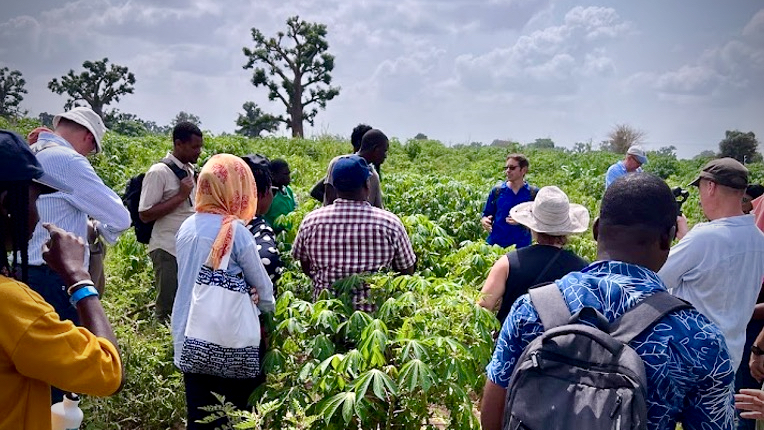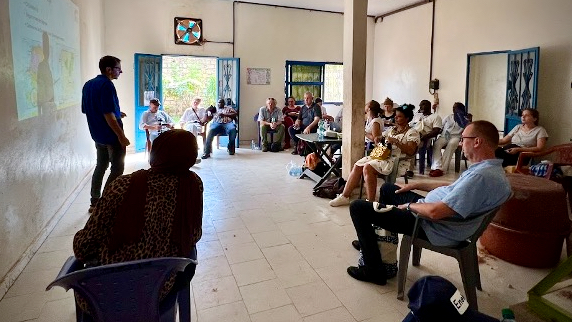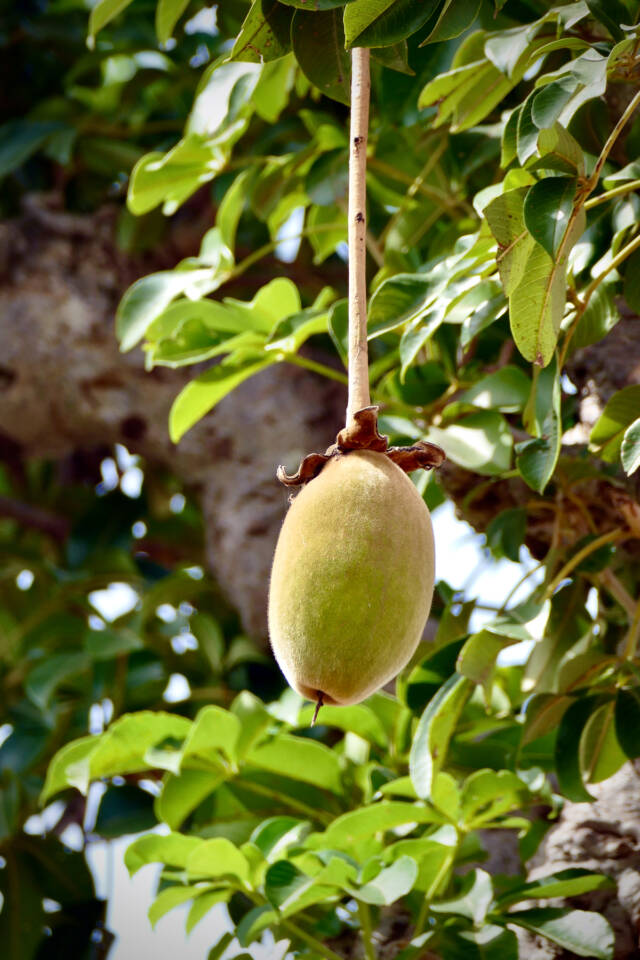The Tree of Life
Insights into the baobab value chain

The Added Value of This Article
Hover over to have a look!Value add for readers
Field Trip⎮ Visual: © Hannah Weggerle
In the heart of arid landscapes, where the sun beats relentlessly and water is a precious commodity, stands the majestic baobab tree — a symbol of resilience and provider of life. The baobab, also known as the “Tree of Life,” possesses a value chain that extends far beyond its towering branches and iconic silhouette.
Cultural Significance
In many African communities, the baobab tree is more than just a botanical marvel; it is a cultural cornerstone. Revered as a sacred entity, the baobab is entwined with folklore and traditions. Its enormous trunk, capable of storing thousands of liters of water, becomes a lifeline during droughts. The tree’s leaves, bark, and fruit have been integral components of traditional medicine and sustenance for generations.
The Nutrient-Rich Fruit
At the heart of the baobab’s value chain is its fruit—an odd-looking, hard-shelled capsule that conceals a treasure trove of nutritional richness.The powdery pulp inside is packed with vitamin C, antioxidants, and essential minerals. As global awareness of the health benefits of natural superfoods grows, the baobab fruit has found its place on the international stage, captivating the attention of health enthusiasts and culinary experts alike.
Economic Opportunities
The value chain of the baobab extends to economic realms, offering opportunities for local communities. Harvesting and processing baobab products, such as the fruit pulp, oil, and seeds, have become sources of income for many. The roots, bark, and leaves are used for traditional remedies, and the by-products can be used as seed cake. Entrepreneurial ventures that focus on sustainable harvesting practices contribute not only to the well-being of local economies but also to the preservation of these ancient trees. With the powder and the oil used in new markets of the beauty and health industry, the demand for baobab products continues to grow. African export of baobab increased from 50t in 2013 to 450t in 2017 and is expected to reach up to 5000t in 2025.
However, the intricate value chain of the baobab is not without challenges. Some species of baobabs are facing threats from habitat loss, climate change, and unsustainable harvesting practices. Conservation efforts are crucial to ensure the longevity of these iconic trees and the preservation of the ecosystems they support.
A Call for Sustainable Practices
As the world recognizes the value of the baobab and its diverse contributions, there is a growing call for sustainable practices along its entire value chain. Responsible harvesting, community involvement, and conservation initiatives are essential to strike a balance between harnessing the benefits of the baobab and ensuring the longevity of these ancient sentinels of the African landscape.
A trusted partner in the support of value chain development is the African Baobab Alliance, a non-profit industry association building a sustainable Baobab industry for the benefit of Baobab harvesters across Africa. The African Baobab Alliance is hosted by Bio-Innovation Zimbabwe, a non-profit research organization focused on the economic opportunities for smallholders from the commercial development of indigenous plants.
In the dance of sun and shadow, the baobab stands as a testament to the interconnectedness of nature, culture, and commerce. Its value chain, woven with threads of tradition, nutrition, and economic opportunity, underscores the importance of embracing and preserving the natural wonders that enrich our world.

Visit of ‘Baobab Des Saveurs’, a small processer of baobab⎮ Photo: © Hannah Weggerle
Contact
For further information on the baobab value chains and its opportunity to support rural development, contact Ullrich Klins (Ullrich.klins@giz.de).


